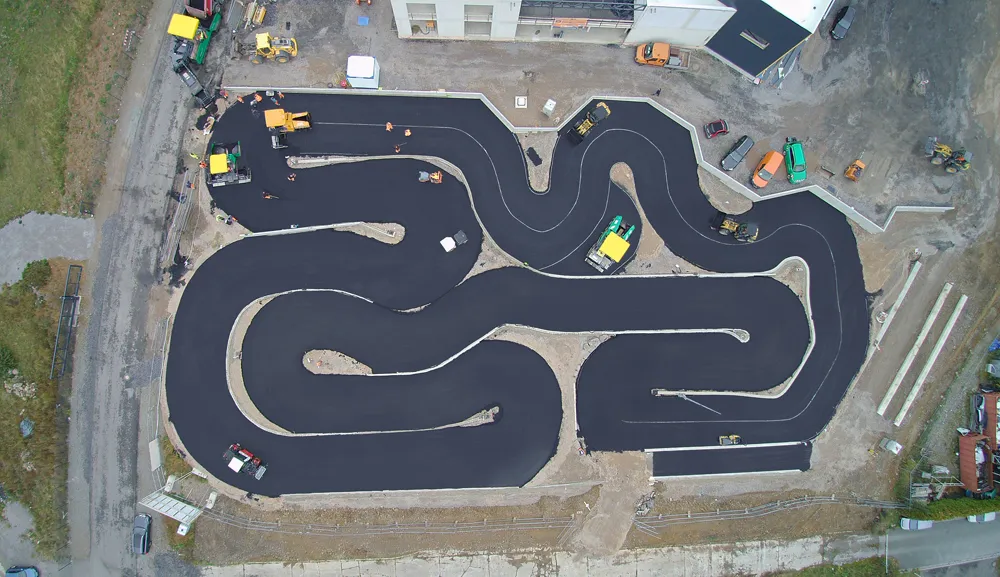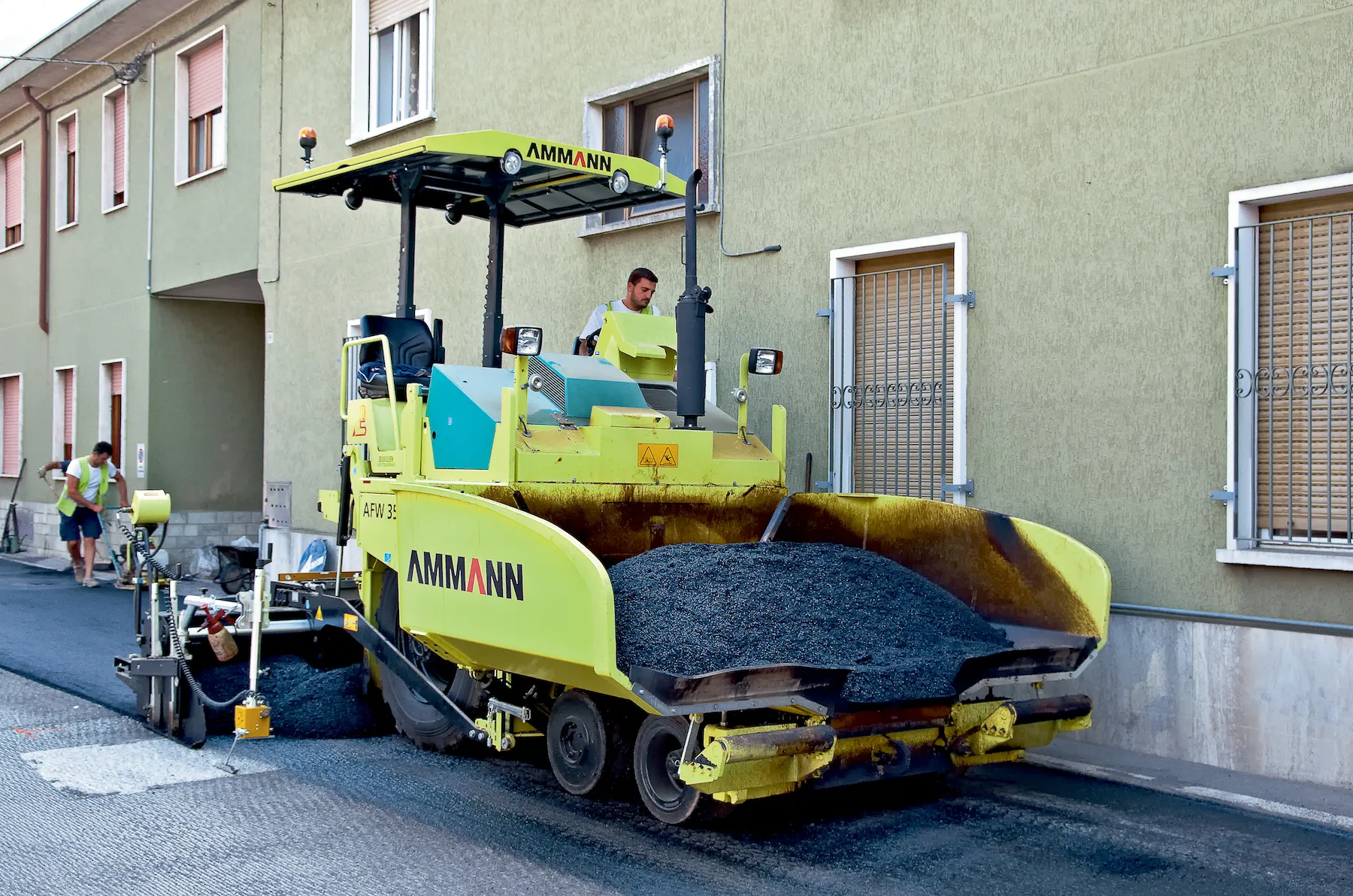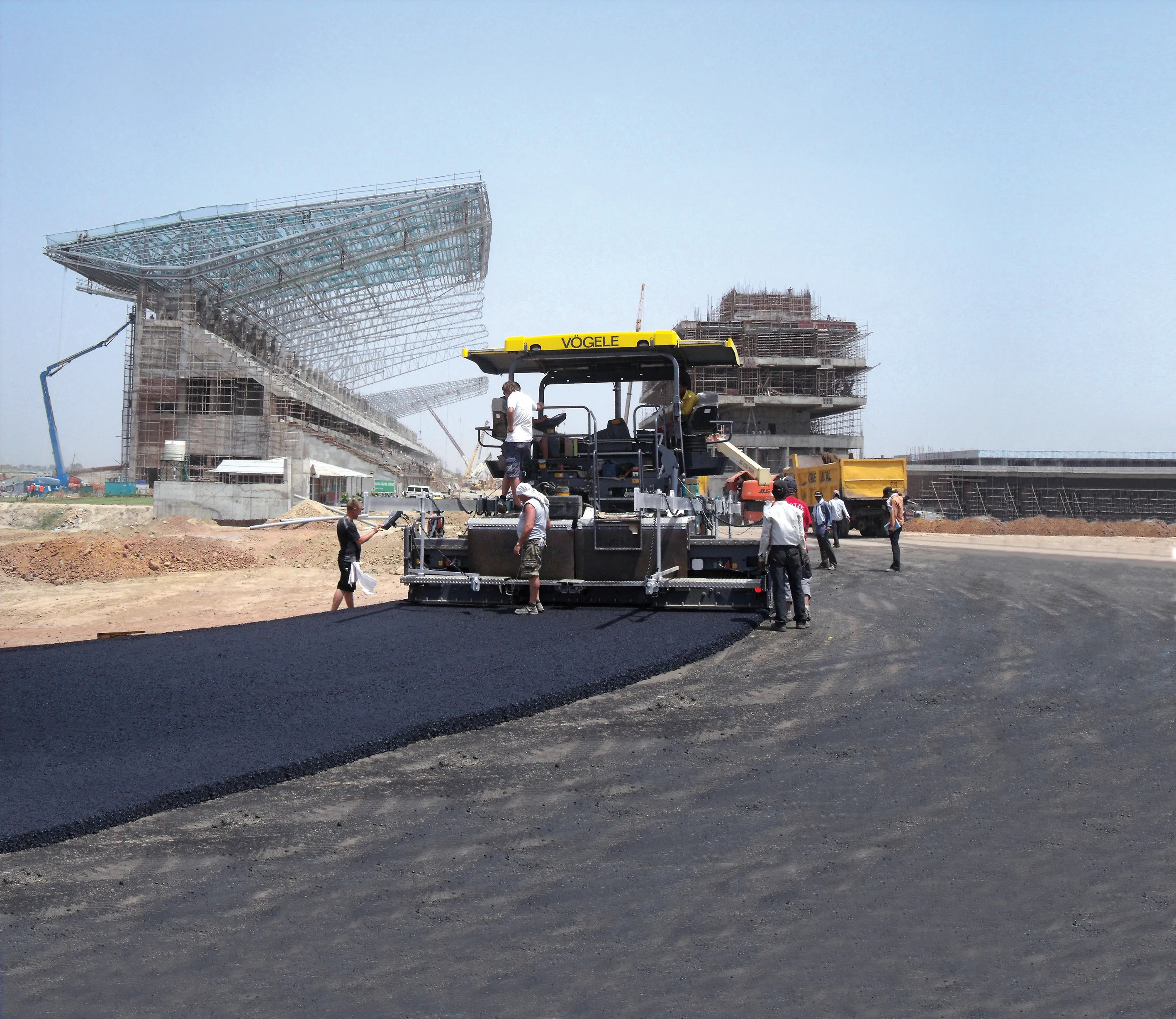German paver specialist Vögele reports that market acceptance is growing for its novel twin layer paving technology
February 28, 2012
Read time: 4 mins
German paver specialist Vögele reports that market acceptance is growing for its novel twin layer paving technology
In the three years since the firm introduced its InLine Pave technology, some 1,500,000m² of road have been paved by 12 contractors with this system. The technique has been applied in single lane and dual lane road rehabilitation projects, as well as in the construction of new highways and rural roads. According toThe machines are modified versions of standard models but retain conventional dimensions, with transport widths of 3m. The InLine Pave train comprises three units, an MT1000-1P material transport vehicle; a SUPER 2100-2 paver for laying the binder course and either a SUPER 1800-2 or a SUPER 1600-2 for laying the surface course.
The mobile feeder is fed by truck loads of material and features storage capacity for both the binder and surface courses, with total conveying capacity of 900tonnes/hour. By using red and green signal lights, the feeder operator can indicate to the truck drivers whether binder or surface mix is required and the conveyor will adjust height and distance automatically.
The SUPER 2100-2 paver features a special AB600-2IP high compaction screed and this component is a key part of the whole InLine Pave process. Because the screed achieves a high level of pre-compaction (up to 98%), this allows the second paver to work on the hot surface. The special screed on the first machine means that the second paver, which can weigh up to 40tonnes in the InLine Pave configuration when loaded with mix, can operate on the freshly laid binder. Only slight traces of the second paver's tracks are left on the surface of the hot binder course although these marks have no effect on the long term performance of the roadway according to Vögele. The first paver also has a bolt-on transfer module that handles surface course mix from the feeder and supplies this material to the second paver. A water spraying system is fitted to the second to cool its tracks and the machine also has a larger than standard insulated hopper with a 25tonne capacity. These two pavers are also equipped with automatic control units to ensure that they maintain an optimum distance apart.
By laying the surface course on top of the binder course, hot on hot, the two layers feature strong bonds, preventing the ingress of moisture and significantly reducing the risk of early failure caused by the freeze thaw process. The InLine Pave method allows thinner courses to be laid and instead of the 80mm binder layer and 40mm surface course required when using conventional techniques, surface courses of 20-25mm can be used, providing substantial savings in material costs.
The heat retained in the two courses allows greater time for compaction and means that the compaction process is more efficient, with reduced voids content, and this is of particular importance when paving stone mastic asphalt (SMA) type mixes. Thin and highly compacted surface also offers high resistance to deformation problems such as rutting that can be seen in hot weather on some roads paved with conventional methods. With InLine Pave techniques, conventional vibratory or oscillatory compaction equipment can be used immediately after the pavers have laid the material. Vögele says that the oscillatory type compactors produced by sister company
Vögele says that despite the sophistication of this paving process, it is also versatile as the machines can be quickly switched over to a standard specification for use in conventional paving applications. Training paving teams to use the InLine Pave equipment is not difficult as the machines are based on standard modules according to the firm. Vögele says that an experienced paver, screed and compaction crew will be able to use the InLine Pave machines with comparatively little instruction.








